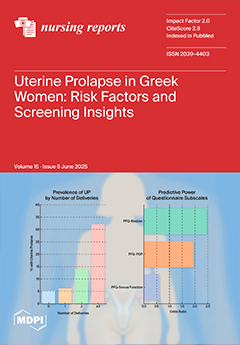Background: Type 2 diabetes (T2D) is a chronic disease that significantly impacts individuals’ quality of life, affecting their physical, psychological, social, and environmental well-being.
Objectives: This study investigates how self-care habits influence quality of life and key health indicators, such as glycated
[...] Read more.
Background: Type 2 diabetes (T2D) is a chronic disease that significantly impacts individuals’ quality of life, affecting their physical, psychological, social, and environmental well-being.
Objectives: This study investigates how self-care habits influence quality of life and key health indicators, such as glycated hemoglobin (HbA1c), blood sugar levels, and body mass index (BMI), among newly diagnosed diabetic individuals in Vlore, Albania.
Methods: In this cross-sectional study, 332 individuals recently diagnosed with diabetes were surveyed between April and July 2024. Data were collected using the World Health Organization Quality of Life Assessment (WHOQOL-BREF) and the Summary Diabetes Self-Care Activity (SDSCA) surveys. Sociodemographic and clinical information, including age, education, occupation, duration of diabetes, HbA1c, and BMI, were collected through structured interviews and medical records. Descriptive and multivariate analyses were conducted to examine the relationships between self-care behaviors, sociodemographic factors, and quality of life.
Results: The findings reveal a low quality of life, with a mean quality of life (QoL) score of 35.33 ± 8.25. Environmental domains were most affected, registering a low QoL score of 30.93 ± 9.04. Significant relationships between QoL, self-care practices, and sociodemographic factors and pathologic factors were found. The analysis indicated that distinct factors influenced various domains of quality of life. Physical health was associated with residence, comorbidities, BMI, and HbA1c, follow-up visits, dietary self-care and physical activity self-care. Psychological health correlated with residence, educational level, BMI, and HbA1c, follow-up visits, dietary, physical activity and foot self-care. Age, occupation, BMI, and physical activity self-care were linked to social relationships. Finally, environmental well-being was influenced by gender, residence, BMI, HbA1c, follow-up visits, and dietary and physical activity self-care.
Conclusions: This study emphasizes the impact of sociodemographic and clinical factors on the quality of life of patients with T2D. Older age, lower education levels, comorbidities, increase in BMI and HbA1c levels, and inadequate self-care were associated with reduced quality of life. These findings highlight the need for targeted interventions and policies that promote self-care and support for at-risk groups.
Full article






